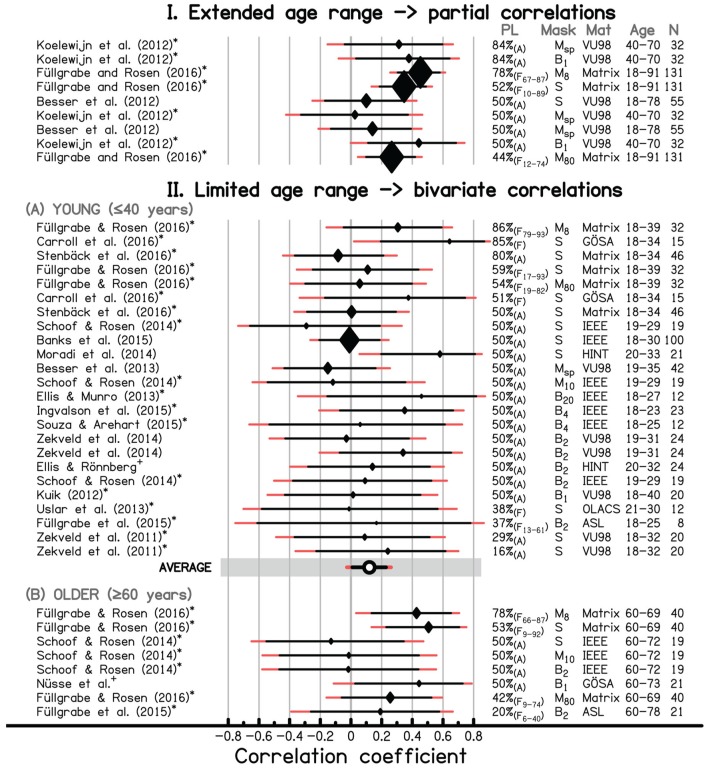FIGURE 2.
A forest plot for a meta-analysis of studies investigating the association between WMC and speech-in-“noise” identification in NH listeners after controlling for the effect of age by (I) computing partial correlations or (II) using a limited age range [younger listeners aged ≤40 years (A) vs. older listeners aged ≥60 years (B)]. Shown in the plot are Pearson correlation coefficients (diamonds with their relative sizes indicating the study’s sample size) and associated 95% (black) and 99% (red) confidence intervals. Several studies contributed more than one correlation due to multiple listening conditions, varying in masker type or performance level, also indicated in the Figure (with the exception of the 2014 study by Zekveld et al. (2011) in which the target speech and masker babble were produced by speakers either of the same gender or of different genders). When necessary, the sign of the correlation was changed so that a positive correlation represents better performance on the two tasks. An average for correlations based only on young NH listeners is provided (circle). Also given in the figure are source references (∗ indicates re-analyzed published data; + indicates unpublished data, personal communication), experimental conditions (performance level, PL; type of masker, Mask; type of sentence material, Mat) and participant details (age range, Age; number of participants, N). Masker: S – notionally steady noise, Mx or Msp – noise modulated by an X-Hz sinusoidal amplitude modulation or a speech envelope, Bx – X-talker babble. PL: X%(A) – adaptive procedure tracking the speech reception threshold corresponding to X%-correct identification, X%(FZ-Y) – constant stimuli procedure using several fixed SNRs yielding an overall average performance level of X% with average performance for each of the different SNRs ranging from Z to Y%-correct identification, X%(F) – constant stimuli procedure using a single fixed SNR, yielding an average performance level of X%. In some cases, the modulation depth of the amplitude-modulated noises was only 10%, which is hardly above detection threshold (e.g., Füllgrabe et al., 2005). Therefore, those maskers are labeled as steady rather than modulated.

